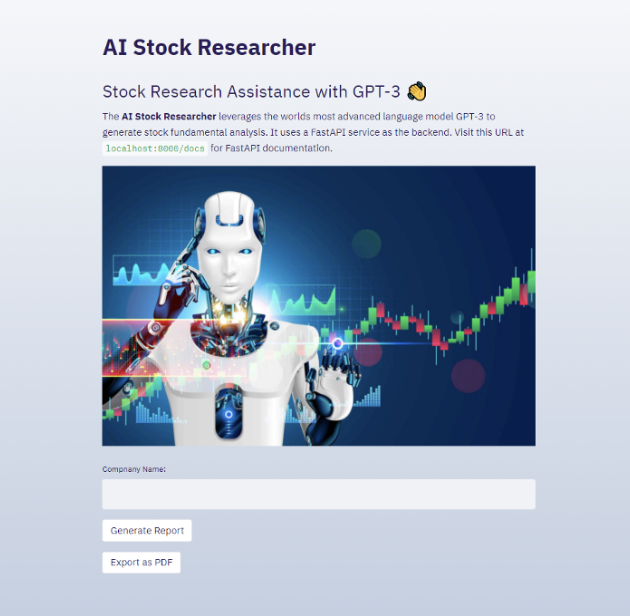20 Great Facts For Picking AI Stock {Investing|Trading|Prediction|Analysis) Websites
20 Great Facts For Picking AI Stock {Investing|Trading|Prediction|Analysis) Websites
Blog Article
Top 10 Suggestions For Assessing The Quality Of Data And Sources For Ai Trading Platforms That Forecast Or Analyze Stock Prices.
Analyzing the quality of data and sources utilized by AI-driven stock predictions and trading platforms is essential for ensuring reliable and accurate insight. Insufficient data could lead to incorrect predictions or financial losses. It can also cause a mistrust of the system. Here are 10 ways to judge the quality of data and its source:
1. Verify the Data Sources
Check the origins of the information. Ensure that the platform uses well-known, reputable data sources (e.g. Bloomberg Reuters Morningstar or stock exchanges like NYSE, NASDAQ).
Transparency: The platform needs to be transparent about the sources of its data and keep them updated regularly.
Avoid dependency on a single source The most reliable platforms typically aggregate data from multiple sources to minimize biases.
2. Examine the freshness of data
Do you have real-time or delayed data Find out if the platform is able to provide delayed or real-time data. The availability of real-time data is vital for active trading. Delayed data can suffice for analysis over the long-term.
Update frequency: Check whether the data is regularly changed (e.g. minute-by-minute daily, hourly).
Data accuracy of historical records: Ensure that the accuracy of historical data and that it is free of gaps or anomalies.
3. Evaluate Data Completeness
Find missing data.
Coverage: Ensure that the platform offers a broad selection of markets, stocks as well as indices and equity markets that are pertinent to your trading strategies.
Corporate actions - Check if the platform account stock splits. dividends. mergers.
4. Accuracy of Test Data
Cross-verify data: Compare the platform's data with those from other reliable sources to ensure consistency.
Error detection: Look for outliers, incorrect prices, or mismatched financial metrics.
Backtesting: You may use the historical data to test strategies for trading. Check if they match your expectations.
5. Examine the Data Granularity
The level of detail: Ensure that the platform provides granular data including intraday price volumes, bid-ask spreads, and the depth of an order book.
Financial metrics: Check if your platform offers detailed financial reports (income statement and balance sheet) as well crucial ratios, such as P/E/P/B/ROE. ).
6. Check for Data Cleaning & Preprocessing
Normalization of data is crucial to ensure consistency.
Handling outliers (handling anomalies) Check that the platform is handling outliers and anomalies.
Missing data estimation: Verify that the system relies on reliable methods for filling the gaps in data.
7. Check for Data Consistency
Timezone alignment: Ensure that all data is aligned with the same timezone in order to prevent discrepancies.
Format consistency: Check that data is presented with a consistent format.
Cross-market uniformity: Make sure that data from different exchanges or markets is consistent.
8. Relevance of Data
Relevance to trading strategy: Ensure the data aligns with your style of trading (e.g. technical analysis or fundamental analysis, quantitative modeling).
Selecting features Choose a platform that is equipped with features that will enhance your forecasts.
Review Data Security Integrity
Data encryption: Ensure that the platform has encryption in place to protect information during storage and transmission.
Tamper-proofing (proof against alteration) Make sure that the information was not altered or altered by the system.
Check for compliance: The platform should comply with the data protection regulations.
10. Transparency in the AI Model of the Platform is tested
Explainability: Ensure the platform provides insights into the way in which the AI model makes use of the data to generate predictions.
Examine for detection of bias. The platform should actively examine and reduce any biases that might exist in the model or in the data.
Performance metrics: Determine the accuracy of the platform by looking at its performance history, metrics, and recall metrics (e.g. precision and accuracy).
Bonus Tips
Feedback and reviews from users Utilize user reviews and feedback to determine the reliability of a platform as well as the accuracy of its data.
Trial period. You can use a free demo or trial to experience the platform and its features.
Support for customers: Make sure that the platform provides a dependable customer service to help with questions about data.
Use these guidelines to evaluate the source of information and quality of AI software for stock prediction. Make informed decisions about trading by using this information. View the most popular ai for stock trading blog for blog examples including best ai etf, best ai trading app, best ai trading app, ai trading software, best ai stock trading bot free, ai hedge fund outperforms market, investing ai, ai stock market, ai stock trading app, ai stocks to invest in and more.
Top 10 Tips To Assess The Ability To Scale Ai Platform For Predicting/Analyzing Trade Platforms
To make sure that AI-driven trading platforms and prediction systems are able to handle the growing volume of data, user requests, and market complexity, it is essential to evaluate their capacity. These are the top ten tips to assess the capacity of these platforms.
1. Evaluate Data Handling Capacity
Tips: Determine whether the platform is able to analyze and process huge databases.
Why? Scalable platforms should be able to handle the growing data volumes with no performance degradation.
2. Testing Real Time Processing Capabilities
Tip: Check the platform's ability to process real-time information streams, like live stock prices, or breaking news.
The reason: Inconsistent trading decisions can lead to missed opportunities.
3. Cloud Infrastructure and Elasticity The Cloud Infrastructure and Elasticity
Tip: Check if your platform is cloud-based (e.g. AWS, Google Cloud or Azure) and is able to dynamically scale resources.
Cloud platforms provide flexibility. The system can be scaled up or back down depending on the demands.
4. Examine Algorithm Efficiency
Tip: Evaluate the computational efficacy of AI models (e.g. deep learning and reinforcement learning, etc.)) that are used to make predictions.
Reason: Complex algorithms are resource-intensive Therefore, optimizing these algorithms is vital for scalability.
5. Study Parallel Processing and Distributed Computing
Verify if your system is running parallel processing or distributed computing (e.g. Apache Spark, Hadoop).
The reason: These advanced technologies offer faster data analysis and processing on multiple nodes.
Review API Integration, and Interoperability
Test the platform's ability to incorporate APIs from other sources.
The reason: seamless integration means that the platform is adaptable to new data sources and trading environments.
7. Analyze User Load Handling
You can simulate user traffic and observe how the platform reacts.
Why: A platform that is scalable must be able to keep up with performance even as the number of users grow.
8. Examine the Model Retraining Adaptability
Tip: Check how often the AI model is trained and at what rate.
Why? Models have to constantly adjust to changing markets in order to remain accurate.
9. Check Fault Tolerance (Fault Tolerance) and Redundancy
Tips - Ensure that your platform has failover and redundancy features for dealing with hardware or software malfunctions.
The reason: Trading can be expensive Therefore fault tolerance and scalability are crucial.
10. Monitor Cost Efficiency
Examine the costs of scaling up the platform. This includes cloud resources, data storage as in addition to computational power.
What is the reason? Scalability shouldn't be at the cost of unsustainable costs. Therefore, it is crucial to strike a balance between cost and performance.
Bonus Tip Future Proofing
Ensure the platform is designed to incorporate emerging technologies (e.g., quantum computing, advanced NLP) and adapt to changes in the regulatory environment.
If you concentrate your attention on these factors it is possible to accurately evaluate the capacity of AI prediction as well as trading platforms. This ensures that they are robust, efficient, and also prepared for expansion. Check out the most popular trader ai review examples for site examples including trade ai, best ai for trading, stocks ai, stock analysis app, ai trading software, ai stocks to invest in, ai stocks, ai based trading platform, ai trading, ai investing and more.